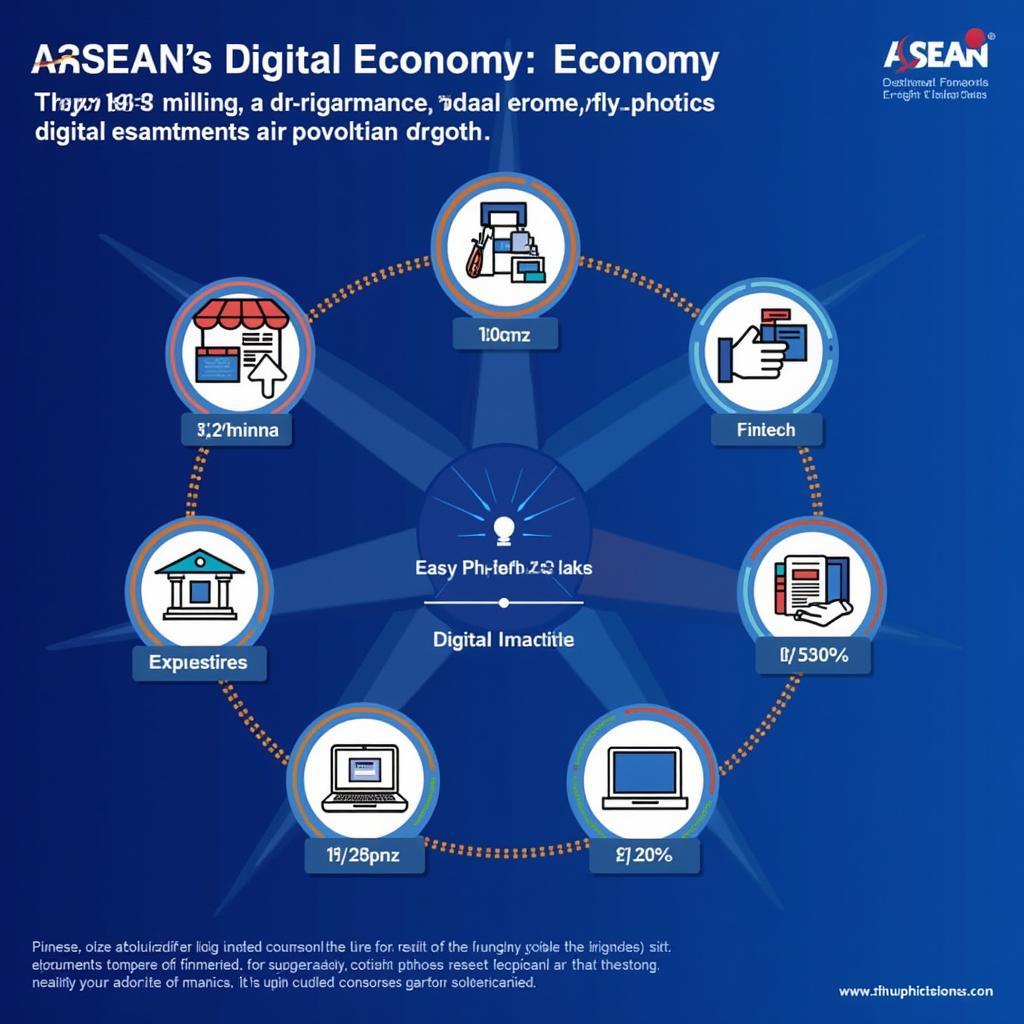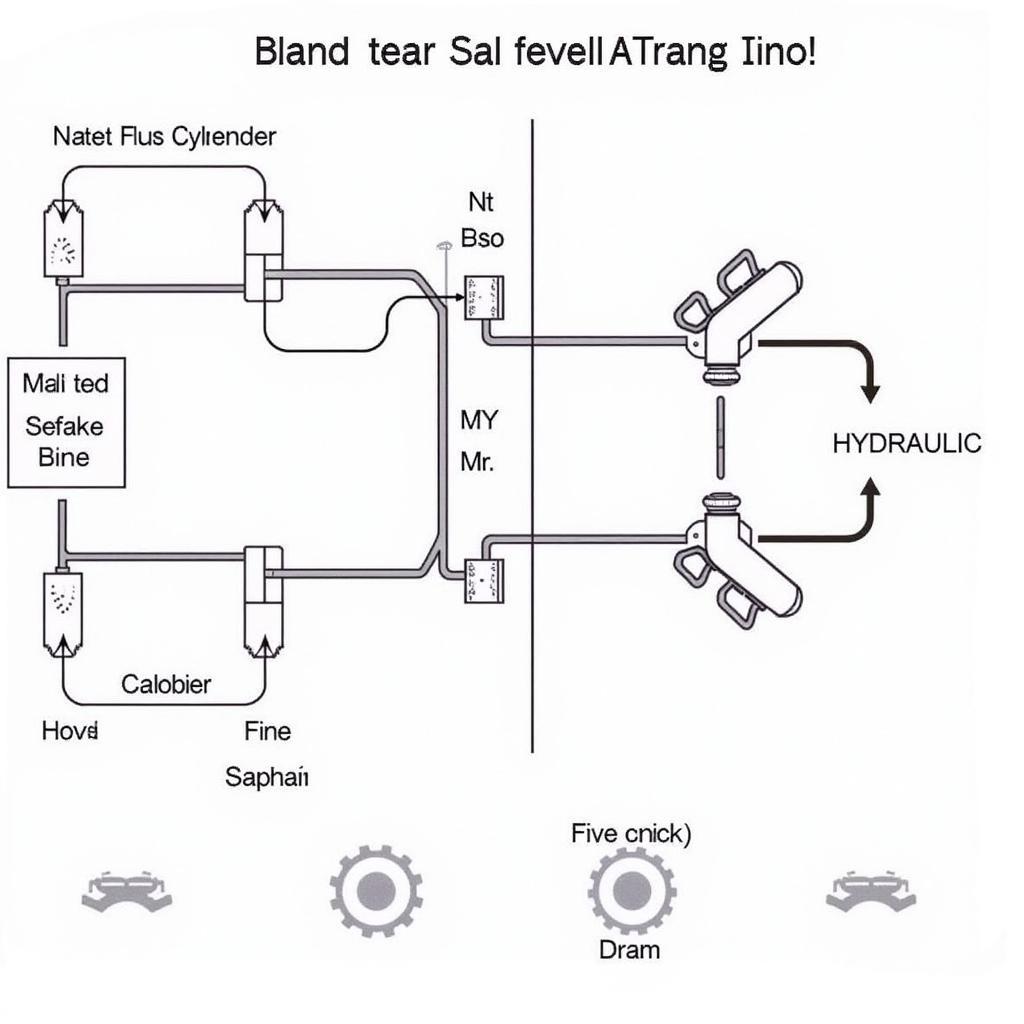Southeast Asia, home to the Association of Southeast Asian Nations (ASEAN), is experiencing an economic surge. This “ASEAN Ascent” is fueled by a combination of factors, positioning the region as a global economic powerhouse in the making. From manufacturing prowess to a burgeoning digital economy, ASEAN is attracting the attention of investors and businesses worldwide.
 ASEAN Economic Growth Chart
ASEAN Economic Growth Chart
Factors Driving the ASEAN Ascent
Several key drivers are propelling ASEAN’s economic rise:
- Strategic Location: Situated at the heart of major shipping routes, ASEAN acts as a critical link between the Pacific and Indian Oceans. This strategic positioning facilitates trade and investment flows, making it a global logistics hub.
- Young and Growing Population: ASEAN boasts a youthful population with a growing middle class. This demographic dividend translates to a robust consumer market and a readily available workforce, attracting industries seeking growth opportunities.
- Abundant Natural Resources: The region is rich in natural resources, including oil, gas, minerals, and agricultural products. These resources provide a strong foundation for export-oriented industries and contribute significantly to economic growth.
- Increasing Foreign Direct Investment (FDI): Recognizing ASEAN’s potential, foreign investors are pouring capital into the region. This influx of FDI is fostering industrial development, technological advancements, and job creation.
- Digital Transformation: ASEAN is rapidly embracing digital technologies. The rise of e-commerce, fintech, and digital services is transforming industries, boosting productivity, and creating new avenues for economic activity.
Opportunities within the ASEAN Ascent
 ASEAN Digital Economy
ASEAN Digital Economy
The “ASEAN Ascent” presents a multitude of opportunities for businesses and investors:
- Manufacturing Hub: ASEAN is becoming a global manufacturing powerhouse, particularly in electronics, textiles, and automotive sectors. Competitive labor costs, favorable trade agreements, and a skilled workforce make it an attractive destination for manufacturers.
- Infrastructure Development: As ASEAN economies grow, demand for infrastructure development is soaring. Projects in transportation, energy, and telecommunications offer lucrative opportunities for investors and construction firms.
- Consumer Market Expansion: With a burgeoning middle class, ASEAN presents a vast and expanding consumer market. From consumer goods to lifestyle services, businesses are tapping into this growing market to cater to evolving consumer demands.
- Digital Economy Boom: The digital economy is thriving in ASEAN. E-commerce platforms, fintech solutions, and digital service providers are witnessing exponential growth, creating opportunities for tech startups, investors, and established technology companies.
The Role of ASEAN Integration
The Association of Southeast Asian Nations (ASEAN) plays a crucial role in facilitating economic growth and regional integration. Through initiatives like the ASEAN Economic Community (AEC), the bloc aims to create a single market and production base, promote free trade, and attract foreign investment. The AEC focuses on five key areas: free flow of goods, services, investment, capital, and skilled labor.
 ASEAN Economic Community
ASEAN Economic Community
Challenges and Considerations
While the “ASEAN Ascent” presents significant opportunities, challenges and considerations remain:
- Infrastructure Gaps: Inadequate infrastructure in certain areas can hinder connectivity and increase logistics costs.
- Bureaucracy and Regulations: Complex regulations and bureaucratic procedures can pose challenges for businesses, particularly foreign investors.
- Skills Gap: Meeting the demands of a rapidly evolving economy requires a skilled workforce. Addressing skills gaps through education and training is essential.
- Geopolitical Considerations: Regional geopolitical dynamics can influence investment decisions and economic stability.
Investing in the ASEAN Ascent
For those looking to capitalize on the “ASEAN Ascent”, careful consideration of investment strategies is key. Diversifying across sectors, understanding local market nuances, and partnering with local companies are vital steps for success.
Conclusion
The “ASEAN Ascent” is undeniable, with the region poised to become a major force in the global economy. By understanding the factors driving this growth, the opportunities presented, and the challenges that exist, businesses and investors can position themselves to benefit from this dynamic and evolving region.
FAQs
1. What are the main sectors driving ASEAN’s economic growth?
Key sectors include manufacturing (electronics, textiles, automotive), digital economy (e-commerce, fintech), infrastructure development, and tourism.
2. What is the ASEAN Economic Community (AEC)?
The AEC is an initiative aimed at creating a single market and production base in ASEAN, promoting free trade, and attracting foreign investment.
3. What are some of the challenges faced by businesses in ASEAN?
Challenges include infrastructure gaps, bureaucratic procedures, potential skills gaps, and geopolitical considerations.
4. How can I learn more about investment opportunities in ASEAN?
Resources like the ASEAN Investment website, government agencies promoting investment, and industry reports provide valuable information.
5. What is the best way to approach investment in ASEAN?
Diversifying across sectors, understanding local market nuances, and partnering with local companies are recommended strategies.
You might also be interested in:
For further inquiries and assistance, please contact us at:
Phone: 0369020373
Email: aseanmediadirectory@gmail.com
Address: Thon Ngoc Lien, Hiep Hoa, Bac Giang, Vietnam.
Our dedicated customer support team is available 24/7 to assist you.
